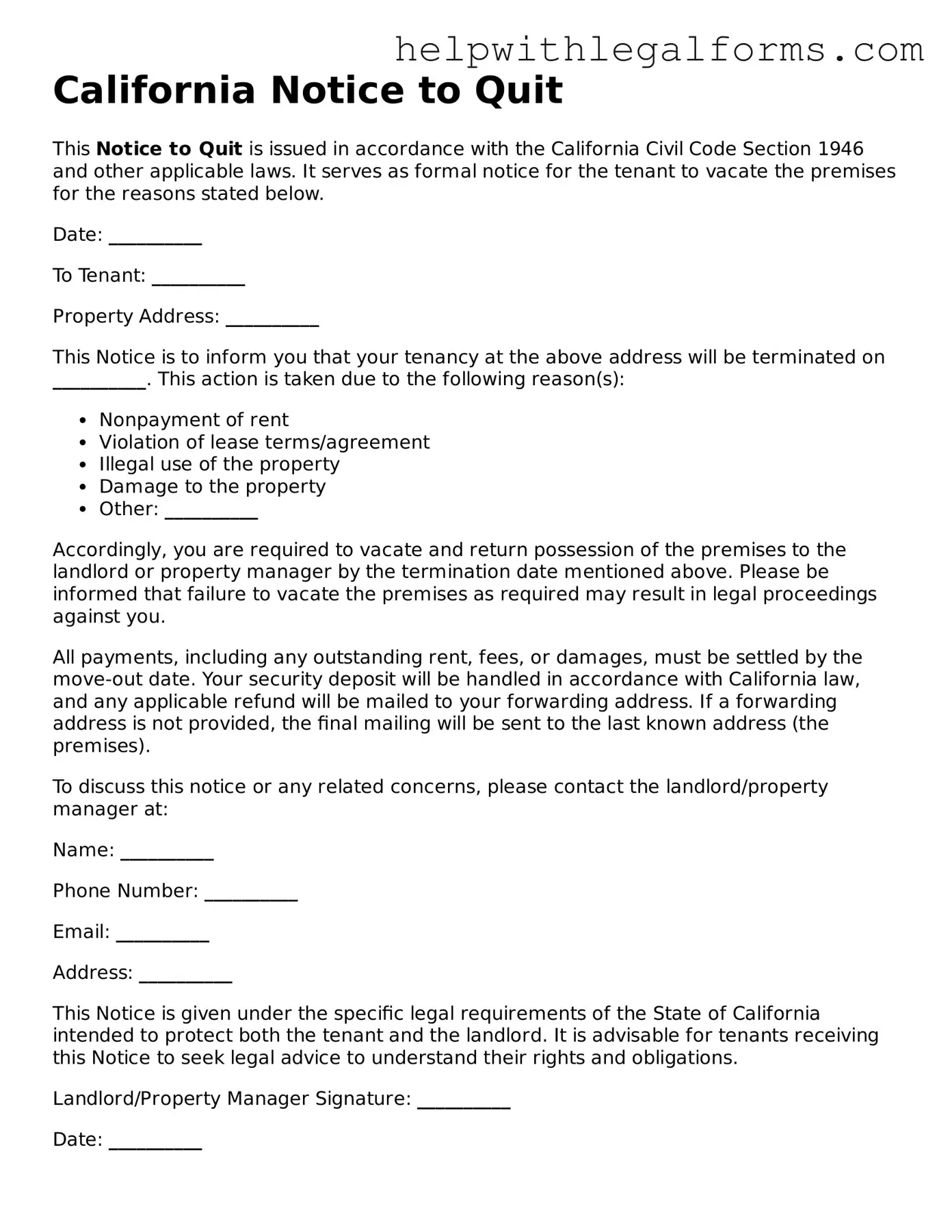California Notice to Quit
This Notice to Quit is issued in accordance with the California Civil Code Section 1946 and other applicable laws. It serves as formal notice for the tenant to vacate the premises for the reasons stated below.
Date: __________
To Tenant: __________
Property Address: __________
This Notice is to inform you that your tenancy at the above address will be terminated on __________. This action is taken due to the following reason(s):
- Nonpayment of rent
- Violation of lease terms/agreement
- Illegal use of the property
- Damage to the property
- Other: __________
Accordingly, you are required to vacate and return possession of the premises to the landlord or property manager by the termination date mentioned above. Please be informed that failure to vacate the premises as required may result in legal proceedings against you.
All payments, including any outstanding rent, fees, or damages, must be settled by the move-out date. Your security deposit will be handled in accordance with California law, and any applicable refund will be mailed to your forwarding address. If a forwarding address is not provided, the final mailing will be sent to the last known address (the premises).
To discuss this notice or any related concerns, please contact the landlord/property manager at:
Name: __________
Phone Number: __________
Email: __________
Address: __________
This Notice is given under the specific legal requirements of the State of California intended to protect both the tenant and the landlord. It is advisable for tenants receiving this Notice to seek legal advice to understand their rights and obligations.
Landlord/Property Manager Signature: __________
Date: __________
